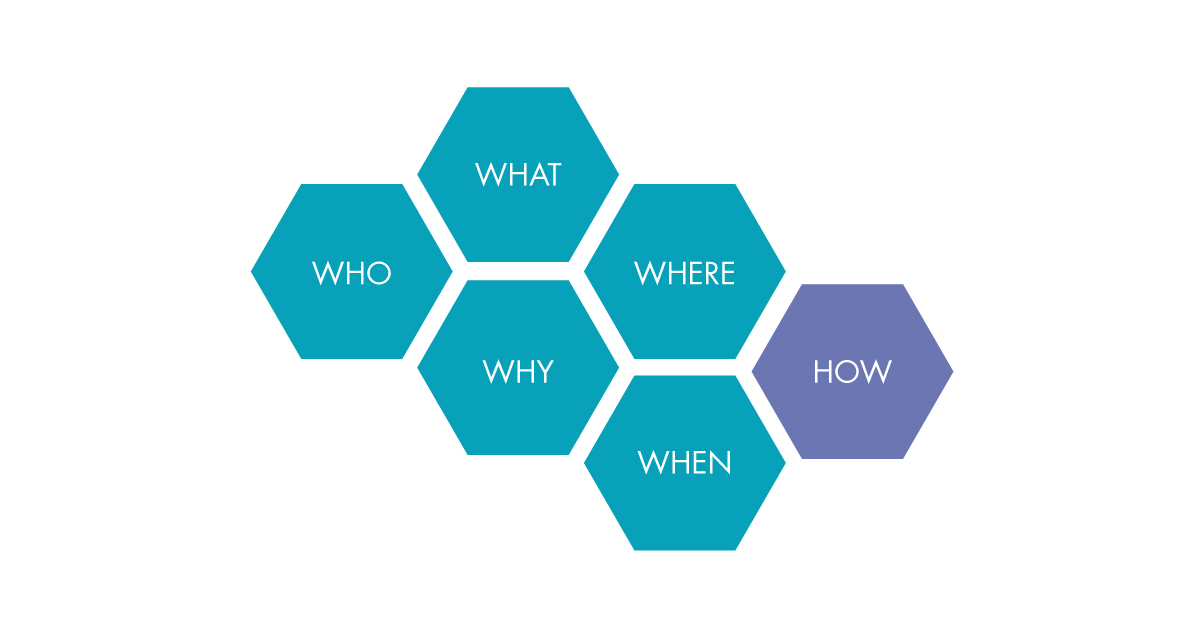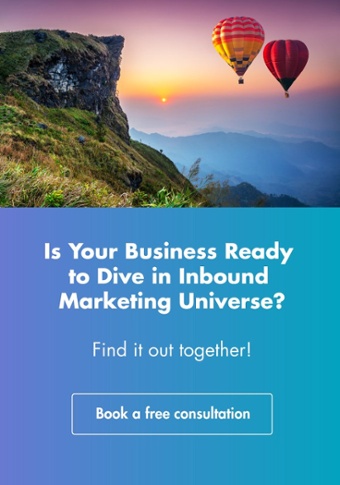Consumer insights – Start with the end in mind…
Stephen R. Covey stated in his “7 Habits of Highly Effective People” that we should start with the end in mind :
“Knowing where you’re going helps you to better understand where you are now, and which steps you need to undertake to reach your destination.”
This principle perfectly applies to business at the heart of which is – or should be – the customer. As such, starting with the end in mind means putting the focus of your business to the end of the value chain : the consumer.
Why this makes sense in business
To translate from Covey’s guideline, every business’ destination or goal is a happy customer, satisfied by finding the right answer to his needs, interests and desires. This imaginary finish line hence becomes the starting point : understanding your customer’s, prospects, audience or – more generally – consumer’s needs, interests, needs and desires.
The learning resulting from this will prove valuable for various aspects of your business, be it for product features & design, consumer journey or experience, or even marketing communication.

© Photo by Matt Noble on Unsplash
How to start ?
The first step towards your goal is actually a step back, to put things in perspective, to observe with a third-party point-of-view. It is crucial to observe, absorb and understand the consumer : his/her needs, interests, lifestyle, behaviour, experience, perception, … about the product or service segment in general, and form your brand in particular.
Back to basics – journalistic approach
Sounds complicated ? It might be indeed, so in order to simplify a complex topic you should break it down, and for this the journalistic approach has proven to be an effective method. Indeed, these simple questions – 5W1H – should allow to identify the key facts to start the analysis of the consumer behaviour :

WHO ?
- Who is the target consumer : demographics, lifestyle , pen portrait, ideal customer profile?
WHAT ?
- What does the target consumer’s wants or needs ?
- What interests them?
- What are their pains and gains impacted by using the product or service
- What do they aspire to?
- What benefit(s) do they get from using the product or service?
- What product or service features are key to delivering such benefits ?
- What are they saying about the brand ? About your competitors ?
- What alternative choices, product or service categories are serving he similar need (indirect competition)
WHERE ?
- Where does the target consumer use the product or service ?
- Where does he purchase the product or service ?
- Where does the consumer interact with the brand ?
- Where does the consumer use the product or service ?
WHEN ?
- When do they use this type of product or service?
- When does the audience engage with
- When does the consumer interact with the brand ?
- When does the consumer use the product or service ?
WHY ?
- Why would or should the audience be interested in the brand ?
- Why does the brand do what it does ?
HOW ?
- How does the consumer use the product or service ?
- How does the consumer perceive the brand ?
- How does the consumer perceive other brands ?
- How does the consumer interact with the brand
- How can you interest the audience?
- How can you call the audience to action?
Putting yourself in the shoes of your target consumer
At this stage it is key to adopt the “you attitude”, and put yourself in the shoes of the consumer, to see things from his/her perspective. Be the audience, get into the life, habits and mind of your target consumer.
Break it down to build it back up
The journalistic approach will not directly provide the answer to all your questions, but following this approach systematically will allow you to determine which areas to deep-dive into, to analyse in more detail, to cover all areas and uncover connections or links that are not obvious at the surface. Visualising though mind mapping can also add value by adding an overview layer and forcing to take a step back and discover connections.
In essence, we can find elements of this process in the Value Proposition Design, a framework often used to define a solution (product or service) to a (consumer) need.
Going deep into the mind of your target consumer
Once you’ve established the areas and topics that require more in-depth analysis, you can proceed with the actual information research. At first, consult secondary sources to understand the type of information or even insights already available, and benefit from existing academic, syndicated (branch, industry) or even competitor research, either as a direct source or as an indirect inspiration to pursue your research.
As for any secondary research, quality is everything, so make sure you watch out for crap by implementing a CRAAP assessment : Is the information…
- CURRENT – How up-to-date is the information ?
- RELEVANT – Does it suit your research purpose & needs ? Does it relate to the intended audience ? Does it answer your question(s) ?
- ACCURATE – Is the content reliable, truthful, correct ? Is the level of detail appropriate ? Is the information complete or only partial ? Does it relate to fact or opinion ? What sources and other references are used ? Are claims backed up by evidence ?
- AUTHENTIC – Who is the (identifiable and identified) source of the information ? Can you detect any bias ? What are his/her credentials, are they qualified, or even experts ?
- PURPOSEFUL – Popular or scholar ? To inform ? Tu persuade ? To sell ? To entertain ? Clear intentions from the author ? Objective & impartial, balanced & consistent ?
After this step, if the information available is incomplete, or does not fully answer your questions, you can pursue with primary research, ie. ask directly a relevant panel, through interviews (qualitative) or surveys (quantitative or qualitative). Don’t hesitate to check online consumer generated content, like on social media platforms or blogs, about the products in general, and your brand in particular.
Think beyond your consumer when identifying the audience – internal teams like sales or customer service can be equally valuable sources of relevant insights, as can be industry experts – as long as they are capable of effectively identifying with the target consumer.
Primary research has to be designed as to be valid – measure what it intends to measure – and reliable – produce identical results when repeated, and the consumer sample has to be representative in order to avoid bias. Only like this will you be able to effectively fill in the information gaps, the missing link between your questions and the information available.
It was there the whole time…
Once you’ve gathered the information, second or first hand, comes the crucial step to extract the most valuable insight. The more precise the previous steps, mapping out the data fields through the journalistic approach, then completing through additional research, the more likely that one or several key insights will surface.
Getting to that “aha” moment
Finding an insight into what the target consumer wants, needs and believes, or how he behaves on his journey to purchase and use the product or service, is the most exciting part of this discovery – or rather : uncovering – process and key to generating effective ideas for your brand, your products and/or your communication. Indeed, if the key consumer insight can be linked to a unique brand attribute or value, or a unique product feature or benefit, then this insight becomes the holy grail for your business, as it will provide a competitive advantage – if properly exploited – by both answering a consumer need or interest, and achieving this in in a way which differentiates your brand from the competition.

© Photo by Rohan Makhecha on Unsplash
The value chain – from the mind of your consumer to the heart of your business
Moving from data gathered from your consumer’s point-of-view, to extracting key consumer insights about their beliefs and behaviours, this is where the true value of this approach lies, highlighting the difference between information and insight.
Gathering effective consumer insights will prove valuable throughout the value chain, be it to generate ideas, validate minimum viable products or proof of concepts, optimise your product or service offering, improve your customer service, or dynamise your brand positioning and communication.
As an example, there is this American credit union which struggled to promote its financial services offer to Millennials, as these young generations were lacking awareness and familiarity with such services. It was only once the credit union had an aha moment when uncovering their target audience’s sensibility to community building and social causes. This key consumer insight led the credit union to propose their offer via a newly created community, and focus on the social aspects of their investments.
Another example is found in a recent advertising campaign by the supermarket chain Aldi, which message focused on the agile “for the day” and impact conscious shopping needs and behaviours of young generations.
So, in conclusion, the most effective way to drive your business’ value chain forward is to start at the end of it, your (target) consumer.
If you want to read more from Your Target’s Guest Author, Gert Van Avondt, browse through the article archives here. You can get more information about the author and his company SpringWorks at www.springworks.ch

